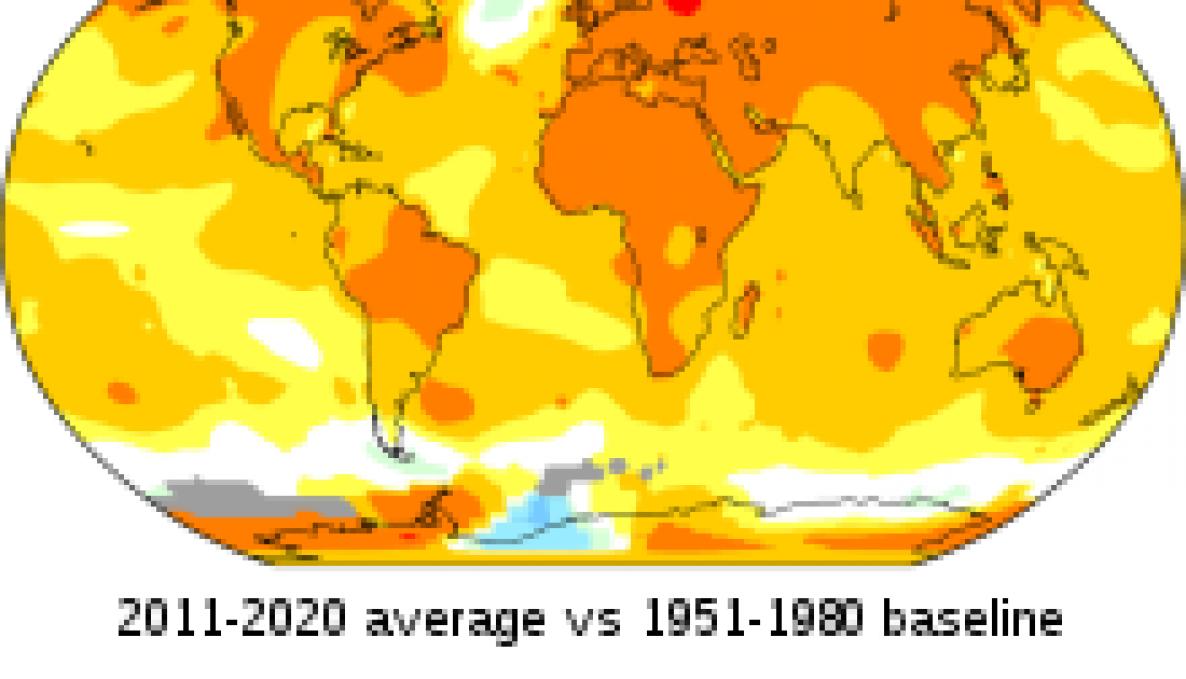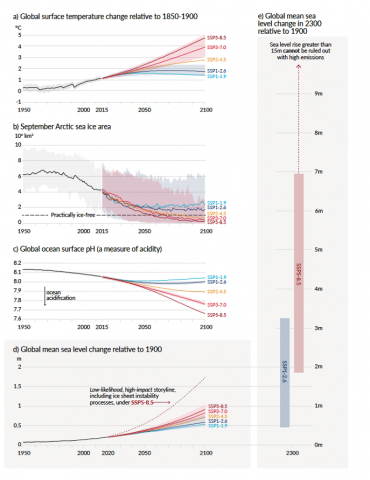Climate change: “code red for humanity” from The IPCC AR6-SPM report. The Article written by Roberto Buizza, full professor of Physics at the Institute of Life Sciences of the Sant’Anna School

The IPCC Summary for Policy Makers (SPM) published on 9th August (2021) is the first part of the Intergovernmental Panel on Climate Change’s Sixth Assessment Report (IPCC AR6). The full AR6 report, which includes contributions from different working groups, will be completed in 2022. The SPM summarizes the key findings of the AR6 Working Group I: an up-to-date summary of the state of our knowledge. An extremely important contribution to the discussions that will take place during the 26th Meeting of the Conference of the Parties (COP26), which will take place in Glasgow in November 2021. Below the article by Roberto Buizza, full professor of Physics at the Institute of Life Sciences of the Sant’Anna School (Scuola Superiore Sant’Anna).
by Roberto Buizza
“The SPM confirms that many of the changes observed in the climate are unprecedented in thousands, if not hundreds of thousands of years, and some of the changes already set in motion will continue to affect the climate over hundreds to thousands of years. However, strong and sustained reductions in emissions of carbon dioxide (CO2) and other greenhouse gases would limit climate change. While benefits for air quality would come quickly, it could take 20-30 years to see global temperatures stabilize.
The report provides new estimates of the chances of crossing the global warming level of 1.5°C in the next decades. It confirms that unless there are immediate and large-scale reductions in greenhouse gases’ emissions, limiting warming to 2°C will be beyond reach (see Figure). It also confirms that the emissions of greenhouse gases from human activities are responsible for approximately 1.1°C of warming since 1850-1900, and reports that global temperature could reach a warming between 2°C and 5°C, unless immediate and concrete measures are taken to reduce emissions.
These conclusions are not new: they confirm the results published in the 5th Assessment Report (AR5), and mentioned earlier. What is new is that the AR6 report includes 7 extra years of evidence from observations (AR5 was published in 2014), climate projections based on more realistic and higher resolution models, and the use of new techniques to merge observations and to assess in a better way the realism of the Earth-system models. Furthermore, the report includes results obtained by combining multi-model projections considering how these models simulated past, observed warmings.
The SPM reports that:
- Climate Change (CC) is intensifying the water cycle: this brings more intense rainfall and associated flooding, as well as more intense drought in many regions (examples are the floods that affected Central Europe in July are an example of these types of events; or the forest fires linked to heat waves and droughts that have been affecting many countries in the past weeks).
- CC is affecting rainfall patterns: at high latitudes, precipitation is likely to increase, while it is projected to decrease in the Tropics, and in the Mediterranean region.
- CC induced sea-level rise has been accelerating in the past decade: extreme sea level events that previously occurred once in 100 years could happen every year by the end of this century.
- CC induced warming will amplify permafrost thawing, and the loss of seasonal snow cover, melting of glaciers and ice sheets, and loss of the Arctic sea ice (which is projected to be ice-free in summer before the end of the century)
- CC has been inducing ocean warming, ocean acidification, and reduced oxygen levels that have been affecting the ocean ecosystems.
- For cities, some aspects of climate change may be amplified, including heat (since urban areas are usually warmer than their surroundings), flooding from heavy precipitation events and sea level rise in coastal cities.
Two further points are worth mentioning.
Firstly, there is increasing evidence that the capacity of land and ocean to absorb CO2 will decrease as more CO2 is emitted into the atmosphere. This means that warming could further accelerate in the future. It is worth reminding that a similar conclusion was drawn the during the pre-COP26 “Climate Exp0” conference, held in May 2021.
Secondly, the SPM mentions explicitly the near-linear relationship between CO2 emissions and warming: this relationship indicates that every 1,000 GtCO2 (109 tons of CO2; as a reference, in 2020 the world emitted ~30 Gt of CO2) of cumulative emissions give an average warming of about 0.45∞C. We can use this relationship to estimate what we have to do to limit warming: if we want to contain the global average warming below 2∞C, we can only emit into the atmosphere another 1,800 GtCO2. In 2020, we emitted about 45 GtCO2-equivalent greenhouse gases (of which ~30 Gt of CO2, and ~15 Gt of CH4 and other greenhouse gases), and the average global warming was about 1.2∞C with respect to the pre-industrial level (average between 1850-1900). The emission of another 670 GtCO2 (which could occur by 2034) will bring us above 1.5∞C; and the emission of another 1,800 GtCO2 will give a further warming of about 0.9∞C, which will bring us above 2∞C.
The report is factual: it summarizes the scientific evidence of the state of the climate, and discusses how it will evolve. It states that human actions still have the potential to determine the climate evolution of the next decades. It states that immediate and substantial emission reductions are required to limit warming. This SPM is a ‘red alert’ message to humanity, a loud wakeup call for immediate actions, if we want to avoid even more catastrophic impact than we ones we have been witnessing”.
More information can be found at the following links:
- 26th Meeting of the Conference of the Parties COP26): https://ukcop26.org
- Intergovernmental Panel on Climate Change (IPCC): https://www.ipcc.ch
- IPCC Summary for Policy Makers of the Working Group 1 contribution to the 6th Assessment Report (AR6 WK1 SPM): https://www.ipcc.ch/report/ar6/wg1/#SPM
- Climate Exp0 conference: https://climateexp0.org




